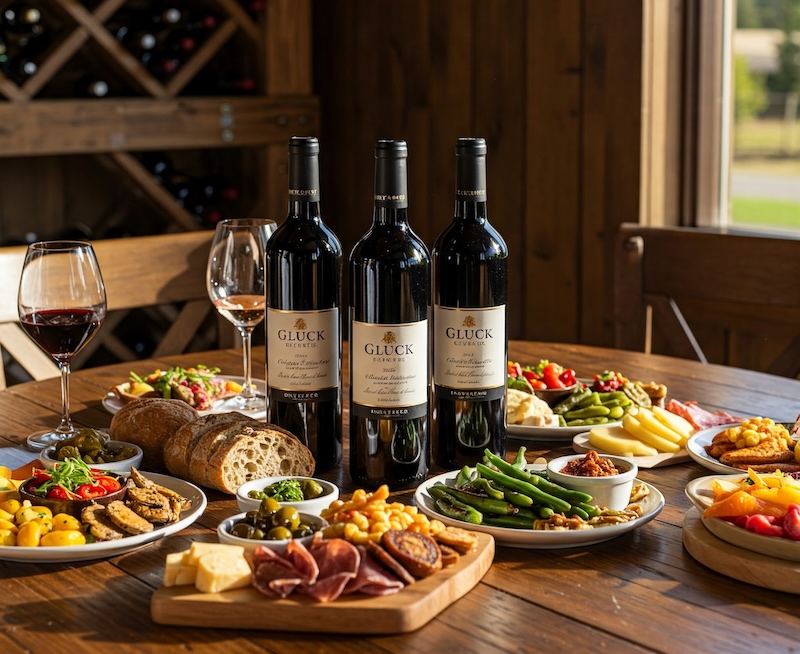Nine Styles of Wine and Why Hungary is Becoming a Top Wine Destination
The world of wine is vast and rich, spanning centuries of tradition and innovation. From the classic vineyards of Europe to emerging wine regions in the Americas, every style tells a unique story of its land, grape, and craftsmanship. Today, we explore nine distinctive wine styles and highlight some of the top wine destinations globally—with a special focus on Hungary, a country rapidly emerging as a premier destination for wineries and discerning wine customers.
Introduction to the World of Wine
Wine has been an integral part of human culture for thousands of years, originating from ancient civilizations along the Mediterranean. It remains a dynamic art form, where winemakers blend traditional techniques with modern innovations to create wines that not only delight the senses but also tell the story of their terroir. Each sip—from a crisp white to a bold red—reflects a blend of natural elements, climate, soil, and passion.
Among the many regions celebrated for winemaking, Hungary stands out. With a viticultural history spanning over a thousand years, Hungary is renowned for its distinctive varietals and time-honored traditions. Iconic wines such as Tokaji, dubbed “the wine of kings,” have long enchanted connoisseurs. Today, Hungary is not only preserving its heritage but also innovating and expanding its portfolio to appeal to a global audience of wine enthusiasts.
1. Red Wines
Red wines offer a complex tapestry of flavors and styles, shaped by grape varieties, regional climates, and winemaking techniques. From the robust character of Cabernet Sauvignon to the delicate allure of Pinot Noir, every red wine carries the signature of its origin. Aging in oak barrels, for instance, can impart nuanced notes of vanilla, spice, and chocolate, elevating the wine’s depth.
Hungary’s red wines are making a mark with grape varieties like Kékfrankos (Blaufränkisch) and Cabernet Sauvignon. Regions such as Eger and Villány offer varied microclimates that produce reds with a perfect balance of acidity and tannins, ranging from fruity and floral to earthy and spicy. These wines pair beautifully with hearty meals, showcasing Hungary’s ability to blend tradition with modern taste preferences.
Top Regions for Red Wine
While renowned areas like Bordeaux, Barolo, and Napa Valley continue to captivate red wine aficionados, Hungary’s red wine regions are rapidly gaining international recognition. The unique terroir of Hungary’s vineyards contributes to the wines’ distinct character, making them a must-try for anyone eager to explore the evolving landscape of global red wines.
2. White Wines
White wines are celebrated for their refreshing acidity and vibrant profiles. Whether it’s the citrus sparkle of a cool-climate Chardonnay or the crisp zest of Sauvignon Blanc, white wines provide a refreshing journey through a spectrum of flavors.
In Hungary, the Tokaj region is not only famous for its sweet dessert wines but also for its exceptional white wines crafted from the native Furmint grape. These wines, noted for their complexity and depth, have been winning accolades on the international stage, reinforcing Hungary’s reputation as a hub of quality white wine production.
Top Regions for White Wine
Iconic white wine regions like the Loire Valley in France and the Mosel Valley in Germany have set high standards. Yet, Hungary’s white wines offer a unique profile that mirrors these traditions while introducing innovative expressions rooted in local heritage. The result is a portfolio of white wines that continues to surprise and delight enthusiasts.
3. Sparkling Wines
Sparkling wines are synonymous with celebration, bringing a sense of joy with every effervescent bubble. From the renowned Champagne in France to vibrant options from Italy and Spain, the range is as diverse as it is delightful.
Hungary is carving out its niche in the sparkling wine category with its “Frizzante” and “Sekt.” These wines are celebrated for their refreshing profiles and excellent value, offering a competitive edge in a market dominated by more established names.
Top Regions for Sparkling Wine
While Champagne, Cava, and Prosecco continue to lead the sparkling wine world, Hungary’s sparkling wines are attracting attention from both casual drinkers and connoisseurs. With high-quality production techniques and a focus on local terroir, Hungary is positioning itself as a promising new player in this category.
4. Rosé Wines
Rosé wines, bridging the gap between red and white, offer light-bodied yet flavorful alternatives that have grown in popularity. Their color and style vary greatly depending on the grape and production methods used.
Hungary’s rosé wines, made from indigenous grape varieties, reflect the country’s versatility and innovation. These wines provide a fresh, vibrant option for wine lovers looking to experience the unique expressions of Hungarian terroir.
Top Regions for Rosé Wine
Globally celebrated regions like Provence in France and innovative areas in California have long defined the rosé scene. However, Hungary’s entry into this arena offers a refreshing twist with wines that embody both tradition and modern winemaking expertise.
5. Dessert Wines
Dessert wines are a celebration of sweetness and complexity, often serving as the perfect conclusion to a meal. They range from the luscious Sauternes of France to the intense Ice Wines of Canada.
Hungary’s crown jewel in this category is Tokaji Aszú, a dessert wine made from botrytized grapes. Its renowned balance of sweetness and acidity has earned it international acclaim, securing Hungary’s position among the world’s elite dessert wine producers.
Top Regions for Dessert Wine
While Bordeaux and Germany are well-known for their dessert wines, Hungary’s Tokaji region stands tall, celebrated for its historical significance and consistent quality. This tradition continues to thrive as Hungary embraces both heritage and innovation.
6. Natural Wines
Natural wines have captured the imagination of modern consumers with their minimal intervention methods and organic, biodynamic practices. These wines prioritize authenticity, allowing the vineyard’s true character to shine through.
Hungary has seen a surge in natural wine production as winemakers increasingly adopt eco-friendly practices. By emphasizing the genuine expression of terroir, Hungarian natural wines offer a transparent and honest representation of the land, appealing to environmentally conscious consumers.
Top Regions for Natural Wine
Although regions like France’s Loire Valley have long been associated with natural wines, Hungary’s emerging natural wine scene is quickly gaining traction. With a commitment to sustainability, Hungarian winemakers are setting new standards for quality and authenticity in this evolving category.
7. Fortified Wines
Fortified wines, enhanced with added spirits, are known for their richness and complexity. Classics like Port from Portugal and Sherry from Spain have long dominated this category.
Hungary’s fortified wines, particularly those rooted in the Tokaji tradition, embody the country’s historic winemaking prowess. These wines reflect Hungary’s ability to adapt classic techniques to produce distinctive flavors that resonate with global audiences.
Top Regions for Fortified Wine
Regions such as the Douro Valley and Jerez are established names in the world of fortified wines. However, Hungary’s unique take on this style emphasizes its broad capabilities in winemaking, making its fortified wines a compelling choice for enthusiasts seeking something new yet steeped in history.
8. Organic Wines
Organic wines, grown without synthetic chemicals, cater to a growing consumer demand for environmentally friendly products. These wines underscore a commitment to natural practices and the preservation of the vineyard’s integrity.
Hungary is emerging as a leader in organic viticulture, with many wineries adopting sustainable practices that highlight the purity of their grapes and the distinct characteristics of their terroir. This movement not only enhances wine quality but also positions Hungary as a forward-thinking hub for eco-conscious wine production.
Top Regions for Organic Wine
While regions in California and parts of Europe have paved the way for organic wines, Hungary is quickly establishing itself as a key player. The nation’s commitment to sustainability and quality ensures that its organic wines are both innovative and rooted in tradition.
9. The Renaissance of Hungarian Wine
The diverse styles of wine discussed above only scratch the surface of the global wine landscape. Hungary’s remarkable journey—rooted in centuries of tradition and propelled by modern innovation—has reestablished its place on the international stage. From the legendary vineyards of Tokaj and Eger to the innovative wineries in Villány and beyond, Hungarian wine is capturing the attention of both connoisseurs and new wine customers alike.
The country’s focus on quality, terroir, and sustainability has fueled a renaissance in Hungarian winemaking, making it a top destination for wine lovers worldwide. As Hungary continues to innovate while honoring its rich heritage, it invites enthusiasts to experience a vibrant and evolving wine culture that promises to enchant every palate.
In the ever-evolving landscape of wine, Hungary stands as a beacon of tradition, innovation, and quality—an emerging powerhouse ready to redefine the global wine scene.


